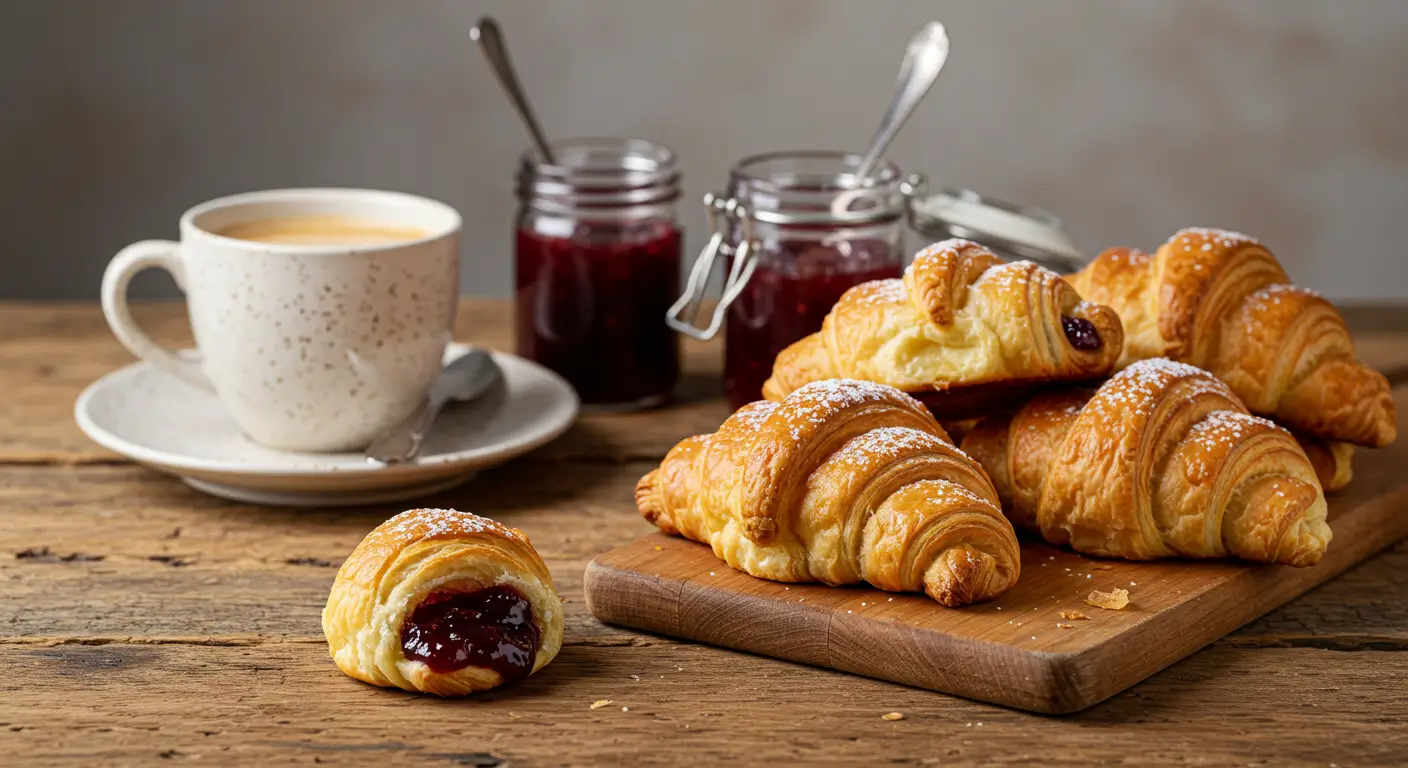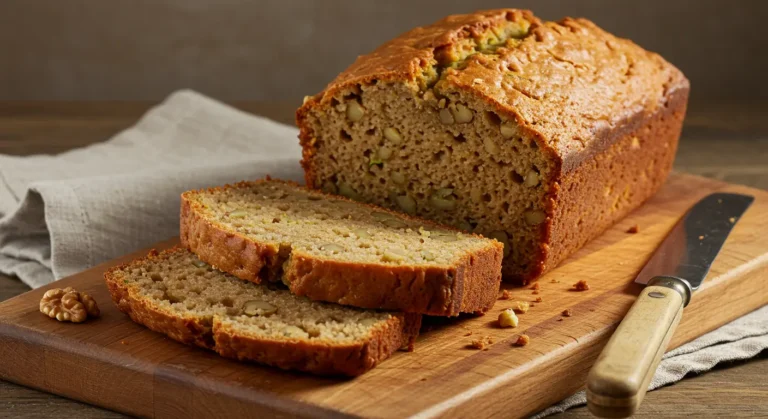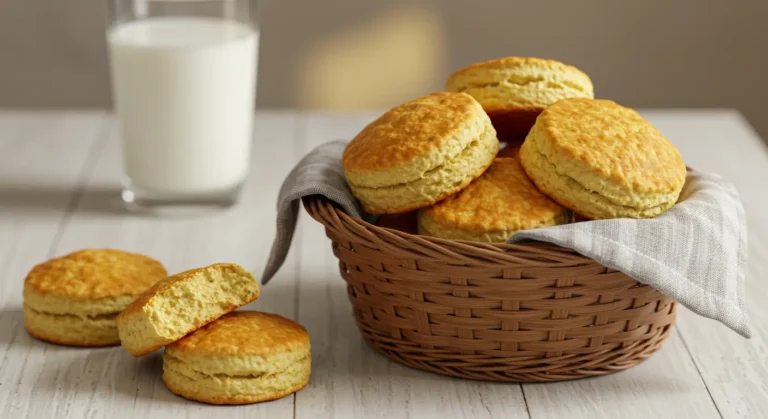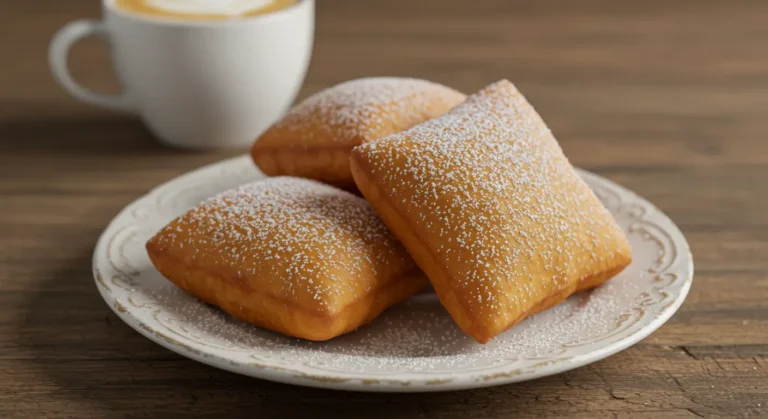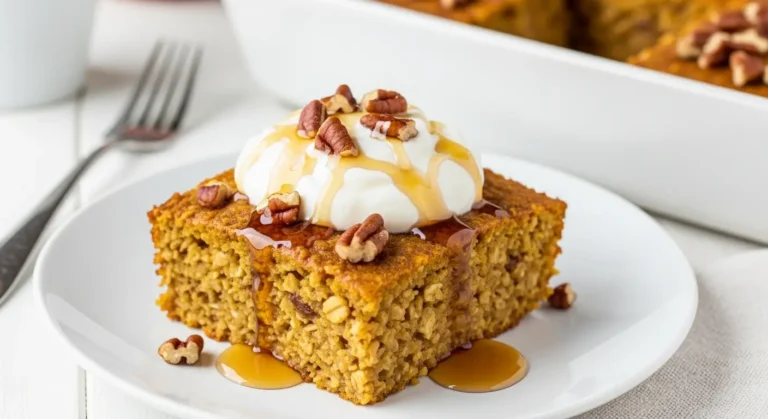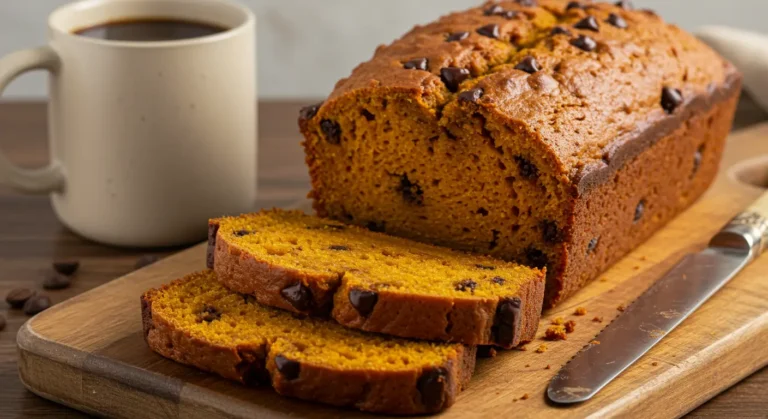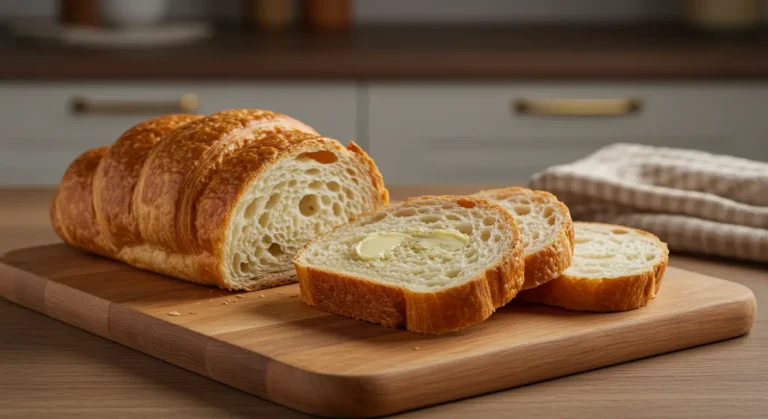Easy Gipfeli Recipe for Perfect Breakfast Pastries
Swiss bakeries sell over 220 million gipfeli annually, making these flaky crescents Switzerland’s most beloved breakfast pastry. This gipfeli recipe brings authentic Swiss baking techniques directly to your kitchen, allowing you to create bakery-quality crescents with that signature buttery flavor and delicate layers. Whether you’re looking to impress weekend guests or elevate your everyday breakfast routine, mastering this gipfeli recipe will transform your morning experience with minimal effort and maximum satisfaction. The secret to perfect gipfeli lies in the lamination technique and proper rising time, which we’ll explore in detail below.
Table of Contents
Ingredients List
For approximately 12 gipfeli:
For the dough:
- 500g all-purpose flour (bread flour works even better for extra structure)
- 10g salt
- 40g sugar
- 10g instant dry yeast (or 20g fresh yeast)
- 60g unsalted butter, softened
- 250ml milk, lukewarm
- 1 egg for egg wash
For the butter layer:
- 250g cold unsalted European-style butter (higher fat content for better lamination)
Timing
Preparation time: 30 minutes of active work Resting time: 8 hours (including overnight refrigeration) Baking time: 15-18 minutes Total time: Approximately 9 hours (mostly inactive time)
This gipfeli recipe requires planning ahead, but the actual hands-on time is surprisingly short compared to other laminated pastries.
Step-by-Step Instructions
Step 1: Prepare the Dough
In a large mixing bowl, combine the flour, salt, and sugar. In a separate small bowl, dissolve the yeast in lukewarm milk. Make a well in the center of the dry ingredients, pour in the milk mixture, and add the softened butter. Mix until a cohesive dough forms. If using a stand mixer, use the dough hook attachment and mix on medium speed for 5-7 minutes until the dough becomes smooth and elastic. If kneading by hand, work the dough on a lightly floured surface for 8-10 minutes.
Step 2: First Rest
Shape the dough into a ball and place in a lightly oiled bowl. Cover with plastic wrap or a damp kitchen towel and let it rest at room temperature for 1-2 hours, or until it doubles in size.
Step 3: Prepare the Butter Layer
While the dough is rising, prepare your butter layer. Place the cold butter between two sheets of parchment paper and use a rolling pin to flatten it into a rectangle about 20×20 cm (8×8 inches). The butter should be pliable but still cold. Once shaped, refrigerate until needed.
Technique tip: For perfectly even layers, tap the butter with your rolling pin to soften it slightly before rolling. This prevents cracking while maintaining the necessary coolness.
Step 4: Lamination Process
Punch down the risen dough and roll it out on a lightly floured surface into a rectangle approximately 40×20 cm (16×8 inches). Place the butter sheet in the center of the dough rectangle, then fold the sides over like a business letter, enclosing the butter completely. Pinch the edges to seal.
Critical note: Temperature control is crucial for this gipfeli recipe. If the butter gets too warm, refrigerate the dough for 15-20 minutes before proceeding.
Step 5: Folding
Roll the dough into a rectangle approximately 60×30 cm (24×12 inches). Fold it in thirds like a business letter again. Wrap in plastic and refrigerate for at least 1 hour.
Remove the dough from the refrigerator and repeat the folding process two more times, with a 1-hour refrigeration period between each fold. After the third fold, refrigerate the dough overnight or for at least 4 hours.
Patience reminder: These resting periods are non-negotiable for a proper gipfeli recipe. They allow the gluten to relax and the butter to firm up, ensuring those beautiful flaky layers.
Step 7: Shape the Gipfeli
Roll out the chilled dough to a rectangle of about 60×40 cm (24×16 inches) with a thickness of 3-4 mm. Cut the dough into triangles with a base of about 10 cm (4 inches) and height of 20 cm (8 inches). Gently stretch each triangle slightly, then roll it up starting from the base toward the point, creating the classic crescent shape.
Step 8: Final Proofing
Place the shaped gipfeli on parchment-lined baking sheets, leaving ample space between them. Cover loosely with plastic wrap and let them proof at room temperature for 45-60 minutes until visibly puffy but not doubled in size.
Step 9: Baking
Preheat your oven to 200°C (390°F). Brush the proofed gipfeli with beaten egg for a glossy finish. Bake for 15-18 minutes or until golden brown and flaky.
Nutritional Information
Per gipfeli (approximate values):
- Calories: 320 kcal
- Carbohydrates: 32g
- Protein: 5g
- Fat: 19g (of which saturated: 12g)
- Fiber: 1.2g
- Sugar: 4g
- Sodium: 320mg
These values may vary based on exact measurements and specific ingredients used. The high butter content contributes significantly to the calorie count but is essential for authentic texture and flavor in this gipfeli recipe.
Healthier Alternatives for the Recipe
You can make these adjustments for a healthier version of this gipfeli recipe:
- Whole Wheat Option: Replace up to 50% of the all-purpose flour with whole wheat flour for added fiber and nutrients. This adds a nutty flavor while maintaining most of the flakiness.
- Reduced Butter Version: Decrease the butter amount by up to 20% for a lighter pastry. The layers won’t be quite as defined, but the calories will be significantly reduced.
- Yogurt Substitution: Replace up to 60g of the butter with Greek yogurt to reduce fat content while maintaining moisture.
- Seed Enhancement: Add 1-2 tablespoons of flax or chia seeds to the dough for an omega-3 boost without significantly altering the texture.
Remember that each modification will slightly change the authentic character of the gipfeli recipe, but can make them more suitable for everyday enjoyment.
Serving Suggestions
Elevate your gipfeli recipe experience with these serving ideas:
- Classic Swiss Breakfast: Serve warm gipfeli with high-quality butter and a selection of jams or honey. Pair with a strong coffee for an authentic Swiss breakfast experience.
- Brunch Board: Create an impressive brunch spread by combining fresh gipfeli with sliced cheeses, cured meats, fresh fruit, and soft-boiled eggs.
- Sweet Variation: Split the gipfeli horizontally and fill with hazelnut spread or almond paste for a decadent treat.
- Savory Option: Use your freshly baked gipfeli to create mini sandwiches filled with smoked salmon, cream cheese, and fresh dill – perfect for brunch gatherings.
- Dinner Accompaniment: Freshly baked gipfeli make excellent bread basket additions for dinner parties, especially alongside soups or stews.
Common Mistakes to Avoid
- Overworking the Dough: Excessive kneading develops too much gluten, resulting in tough rather than flaky gipfeli. Mix just until ingredients are incorporated and the dough is smooth.
- Temperature Mismanagement: Allowing the butter to get too warm or too cold is the most common pitfall in any gipfeli recipe. The butter should be cool but pliable – never melting or rock-hard.
- Rushing the Process: Skipping refrigeration periods leads to butter leakage during baking and collapsed layers. Pastry experts confirm that patience is directly correlated with the quality of laminated doughs.
- Improper Proofing: Underproofed gipfeli will be dense and doughy, while overproofed ones collapse during baking. Watch for the subtle visual cues rather than following strict timing.
- Inconsistent Rolling Thickness: Uneven dough thickness results in gipfeli that bake unevenly. Use measuring sticks or rubber bands on your rolling pin ends to maintain consistent thickness.
- Egg Wash Application: Applying egg wash that drips down the sides can seal layers together and prevent proper rise. Use a light touch with a silicone brush for best results.
Storing Tips for the Gipfeli Recipe
Gipfeli are best enjoyed fresh from the oven, but these storage methods will help preserve their quality:
Freshly Baked:
• Store completely cooled gipfeli in an airtight container at room temperature for up to 2 days.
• To refresh, sprinkle with a few drops of water and heat in a 160°C (320°F) oven for 3–5 minutes.
Make-Ahead Options:
• Freeze shaped, unbaked gipfeli on a baking sheet until solid, then transfer to freezer bags for up to 1 month.
• Bake directly from frozen, adding 3–5 minutes to the baking time.
• Alternatively, freeze baked and cooled gipfeli for up to 3 months. Thaw at room temperature and refresh in a warm oven before serving.
Dough Preparation:
• The laminated dough can be refrigerated for up to 2 days before shaping, or frozen for up to 1 month. Thaw overnight in the refrigerator before using
Conclusion
This authentic gipfeli recipe transforms simple ingredients into impressive, flaky pastries that rival any Swiss bakery offering. While requiring some patience, the lamination process creates those signature buttery layers that make this gipfeli recipe so irresistible. With proper technique and attention to temperature, you’ll master these Swiss croissants and elevate your breakfast repertoire permanently. Try this recipe this weekend and share your results in the comments section below! We’d love to see your baking successes and hear about any creative variations you discover.
FAQs
Can I make this gipfeli recipe without overnight refrigeration? While technically possible, the overnight rest develops flavor complexity and makes the dough easier to handle. For best results with this gipfeli recipe, allow at least 4 hours of refrigeration after the final fold.
Why did my gipfeli leak butter during baking? Butter leakage typically occurs when the dough becomes too warm during shaping or final proofing. If your kitchen is warm, work quickly and return the dough to the refrigerator for 15-20 minutes if it begins to feel soft or greasy.
Can I prepare the dough in a bread machine? Yes, you can use a bread machine on the dough setting for the initial mixing and first rise. However, the lamination process must still be done by hand to create the characteristic layers in this gipfeli recipe.
Your Feedback Matters
There are no reviews yet. Be the first one to write one.

